
Constructing a replica of A.J. Foyt's ’61 Indy car
Story and Photos by Juan Lopez-Bonilla
In the history of motorsports, few events rise to the pinnacle of automotive competition quite like the Indianapolis 500. Dedicated fans can recall the many great names associated with Memorial Day-weekend race, such as A.J. Foyt, Mario Andretti, Parnelli Jones, Danica Patrick and so many more. These names elicit in us a sense of euphoria as we relive their dramatic battles and finishes at this historic American circuit.
Bryan Marshall is one such enthusiast. He comes from an engineering and fine arts educational background and has learned to apply these concepts to all of his projects, especially automotive. With a treasure-trove of experiences in his upbringing, Bryan grew up to be a passionate lover of all sorts of cars — especially Indy cars.
“My dad took me to the Indianapolis time trials in 1961, purchased me a chrome driver’s helmet and into the stands we went,” he recalls. “I loved the look, sounds and sights these cars produced. I have never forgotten that.”
During those trials, Foyt ranked ninth for the race with a qualifying speed of 145.903 mph. Despite starting back in the pack, his superior driving skills enabled him to lead the race for 71 of 200 laps, far more than any other competitor that day. Hot on his heels was Eddie Sachs, who led for 44 laps.
Sachs and Foyt battled for the lead in the latter stages of the race. It looked like Sachs might take the checkered after Foyt’s final scheduled pit stop, as his crew was unable to top off his tank due to a faulty fueling mechanism. Even so, Foyt returned to the track with a vengeance, running faster due to a light fuel load, and he began pulling away from Sachs. His crew indicated that he would be unable to make it to the finish, however, without another pit stop. After borrowing a fuel-feed mechanism from Len Sutton’s team, they signaled Foyt to the pits.
Foyt gave up the lead on lap 184 for a splash-and-dash fuel stop. Sachs was now leading by 25 seconds, but warning tread showed on his rear tire with three laps to go. He chose to play it safe, pitting to replace the worn tire on lap 197. Foyt roared into the lead once again and won his first (of four) Indy 500 victories by a strong margin of 8.28 seconds.
Relishing memories of events like these led Bryan to develop an interest in collecting model cars in his teen years and transition to full scale in his adult years. “I’ve since become a huge car fanatic and managed to acquire, sell and collect many of the cars I loved as a kid.”
Drawing on his professional expertise in engineering and fine arts, Bryan’s ability to recreate a look for vintage graphics on new vehicles is exemplary. He finds unusual projects such as vintage motorcycles and reworks them with period-correct styling. He is a very creative individual who loves to paint, sculpt or build anything from scratch. Bryan also applies his understanding of pigments and paint behavior to mimic the look of old paintwork, complete with welds, rust and the soft patina.
All told, he has hundreds of automotive projects under his belt, including a Stone, Woods and Cook-themed blown 1941 Willys gasser, a ’55 Chevy gasser, a replica of the 1932 Ford from American Graffiti, along with many gas station trucks and old bikes.
As for the Foyt car in particular, “I was fortunate in later years to work with several teams at the Indianapolis 500,” he notes. “I drove a transporter in one day with an Indy car in the back. As I drove up 16th Street and turned into the track, I stopped to recall the fond memory of my first visit as a kid.”
Bryan always loved looking at the Indy roadsters in the Indianapolis Motor Speedway Museum. One he liked in particular was Foyt’s Indy winner from 1961. “Clean lines, simple but classy paint, and a hard-charging driver,” he observes. “I always wondered what it would feel like to drive one.”
His musings at the museum led to the reproduction racer shown here. One day while surfing the web, he came across a steel-bodied, handbuilt Indy roadster in New Hampshire. The car was rough, but all the pieces were there, and Bryan’s imagination was firing on all cylinders.
He was so excited that he promptly traveled 1,700 miles to meet the owner and see the car in person. He was in for a few surprises, though, as he had never been to the Northeast in winter weather. Winds were gusting over 50 mph, snow was coming down sideways and trucks were overturned on the expressway. But Bryan was on a mission, and he eventually arrived, struck a deal and returned home with the car and a trailer full of parts. All told, a tough but worthwhile trip. But that was just the beginning of his many challenges.
Bryan’s quest to replicate the 1961 Bowes Seal Fast Special #1 began with a complete teardown to the chassis. He selected a Ford 289 ci V8 backed by a C4 transmission to power the car, and the rear end was sourced from a Willys Jeep, which had exactly the right track width. The front axle came from a ’40 Ford Coupe, fitted with rack-and-pinion steering and a few Model A parts as well. Brakes are Lincoln drums from Speedway Motors. Everything else Bryan had to reinvent himself. He welded the frame, straightened the body and reshaped the hood to fit a Ford Mustang radiator.
The body was finished and painted by Mr. Muscle, Gary Richey of New Albany, Indiana, with pinstriping and lettering by Bob Laffery in Jeffersonville. His local buddies at Hoosier Exhaust in Jeffersonville helped him make tubes for the radiator, exhaust and the fuel piping.
For a period-correct look, “I got a set of Firestone Indy half-treads from Coker Tire and the 16- and 18-inch wheels from Rocket,” Bryan relates. “I built the dash [and installed] several cool period badges from eBay.”
Some items tested his ingenuity though. “One day on my way to the office I noticed a handicap walker in the trash that ultimately became my chrome bumpers and grilles!”
When the build was nearly complete, Bryan joined the Midwest Oldtimers Vintage Race Car Club, a group that runs old Indy and sprint cars at tracks before major races. Even though he did not get the car finished in time for the 2018 season, he hopes to be ready for spring events in 2019. So keep an eye out for this Brickyard tribute roaring around the track — right where it belongs.

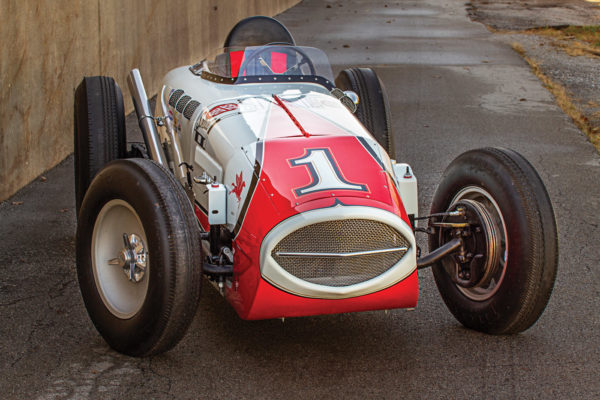
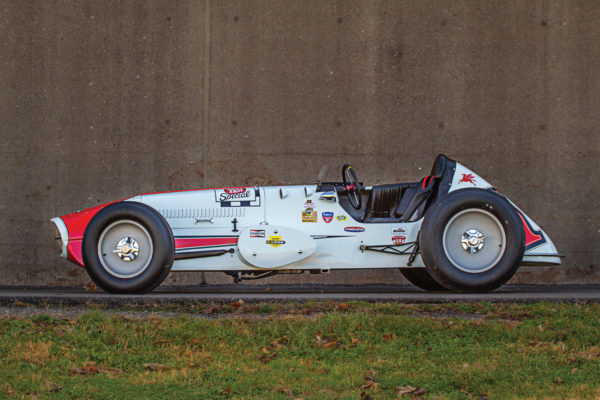
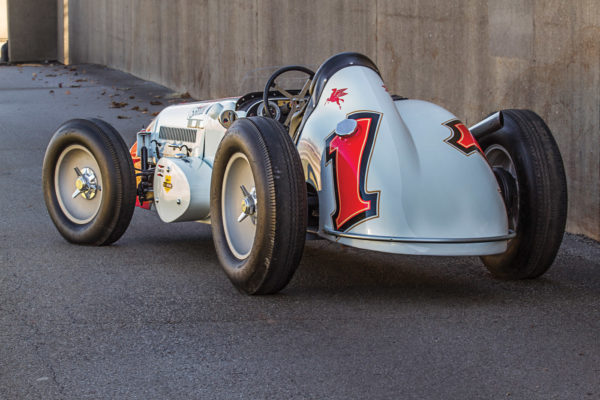
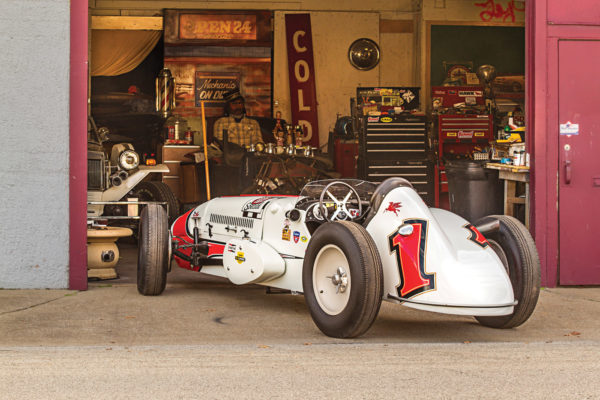
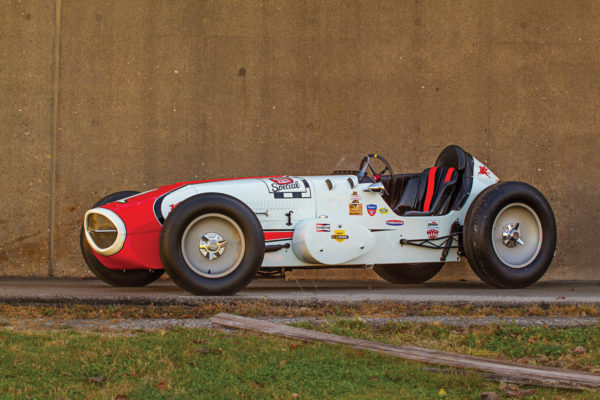
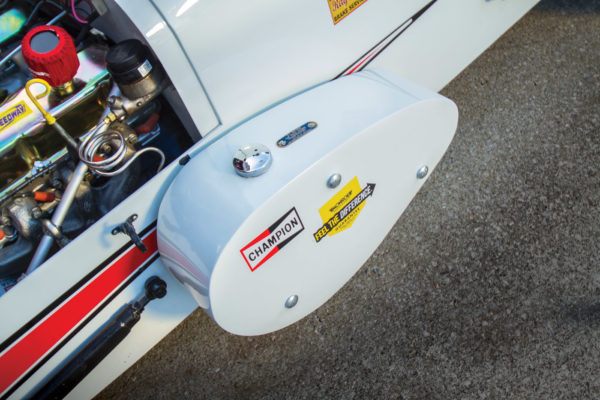
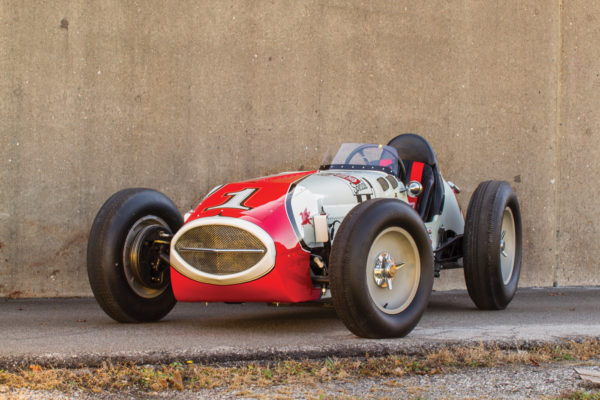
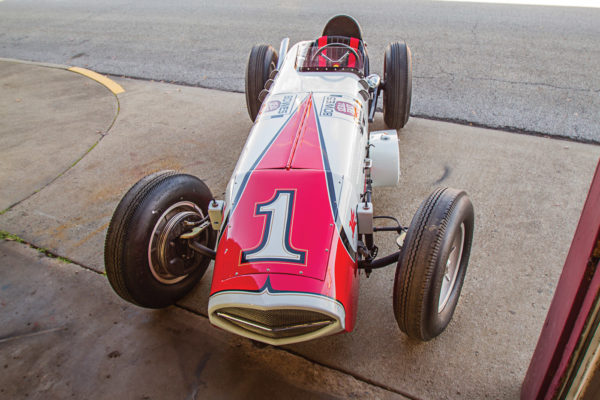
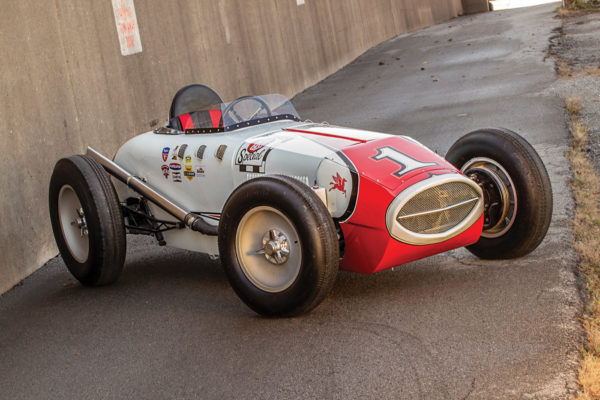
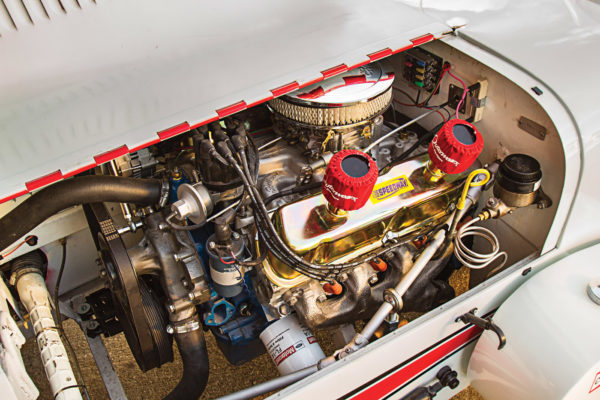
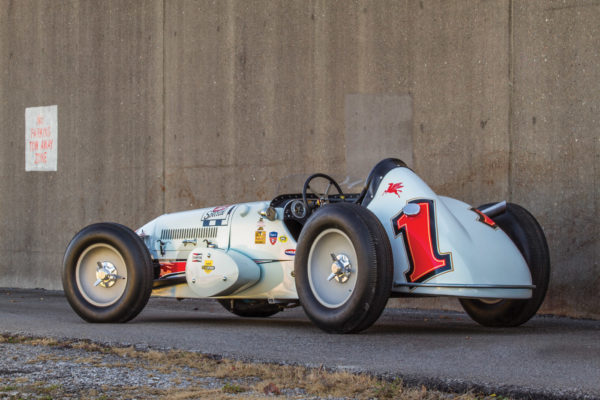
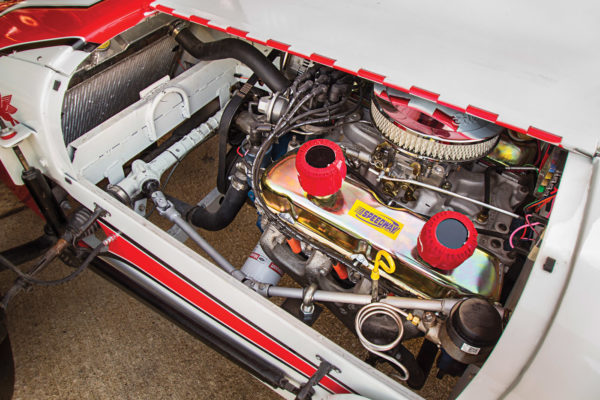
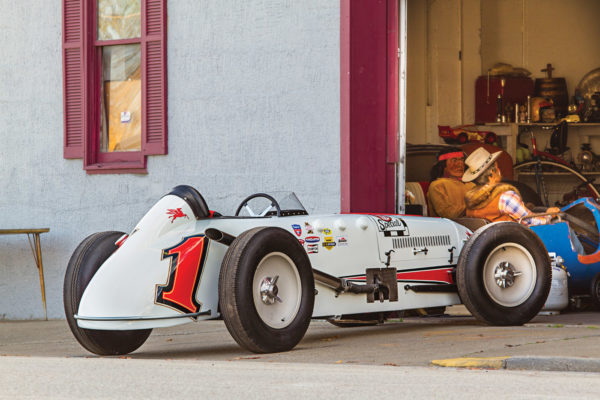
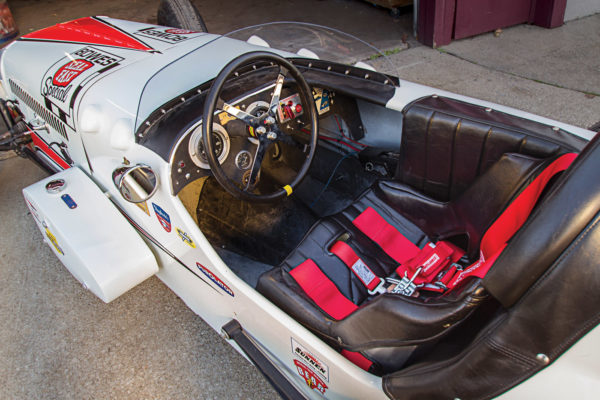
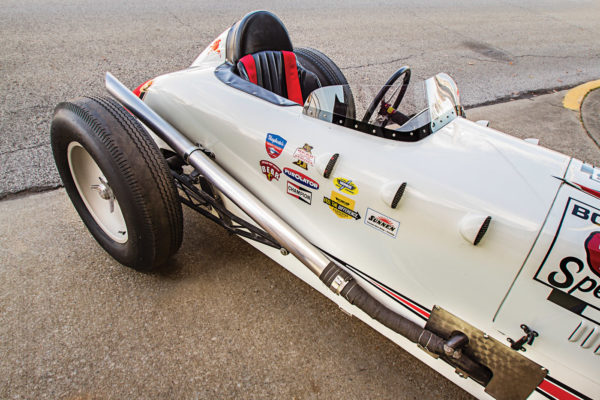
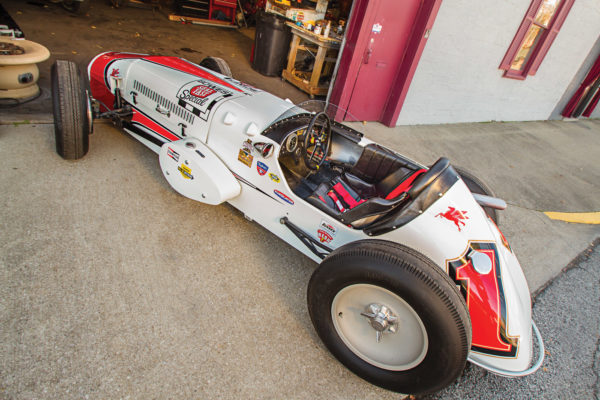
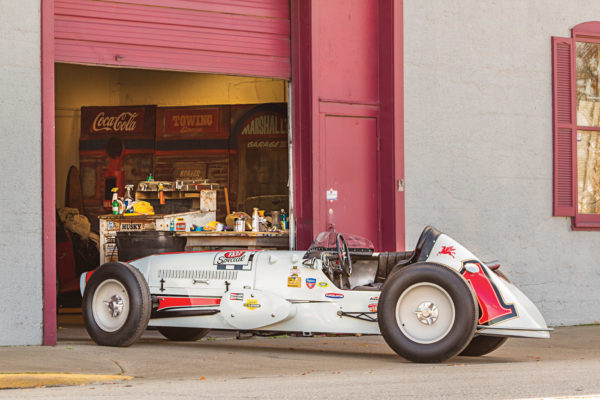
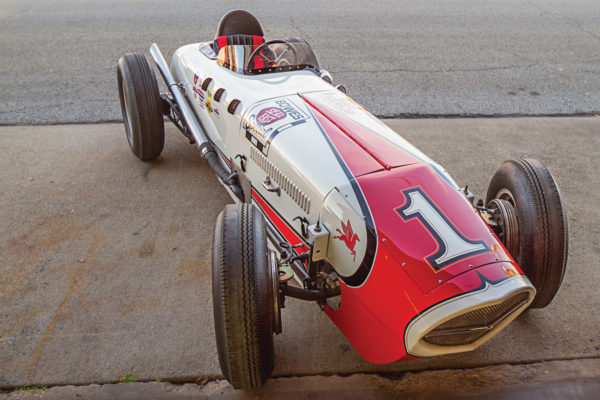
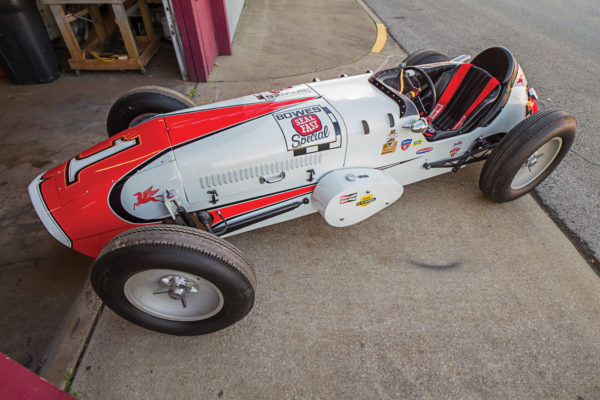
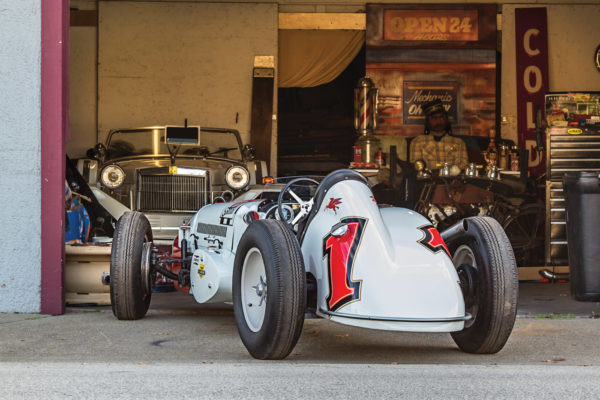
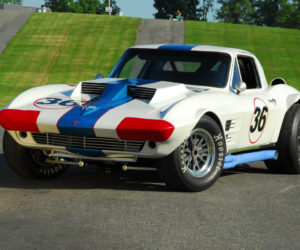
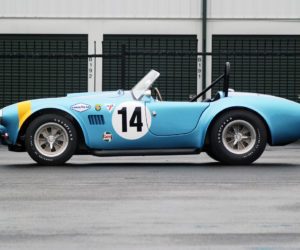
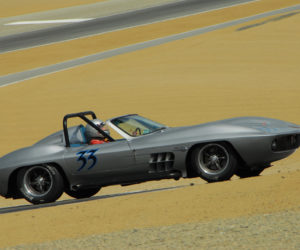
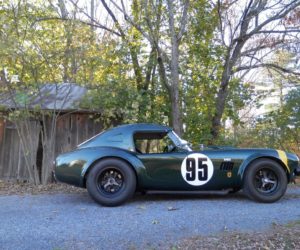
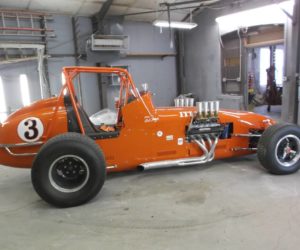
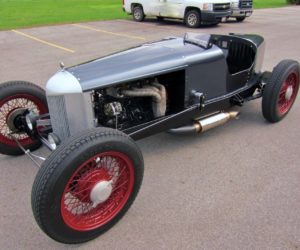




Comments for: Brickyard Tribute
comments powered by Disqus